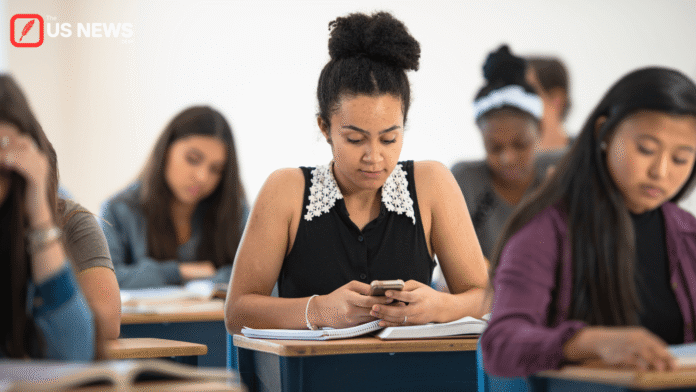This Content Is Only For Subscribers
A Rare Bipartisan Issue
In a deeply divided political climate, one issue is unexpectedly drawing consensus across party lines: banning smartphones in classrooms. Inspired in part by psychologist Jonathan Haidt’s influential book The Anxious Generation, lawmakers, educators, and parents are converging on the belief that constant digital connectivity is harming students’ mental health and learning outcomes. This bipartisan momentum reflects not just a cultural shift, but a policy debate that could reshape education nationwide.
Why “The Anxious Generation” Sparked the Movement
Haidt’s book argues that the explosion of smartphone use and social media in adolescence coincides with rising rates of anxiety, depression, and loneliness among young people. The phrase “the anxious generation” has entered the policy conversation as shorthand for a youth mental health crisis linked to screen time. Legislators from both parties cite Haidt’s research to justify stricter classroom policies.
One Democratic lawmaker recently put it bluntly: “We cannot ignore the evidence anymore. Phones are not just tools—they’re distractions, and in many cases, dangers to young minds.” On the Republican side, officials frame the issue as a matter of restoring focus, discipline, and face-to-face socialization.
Teachers on the Frontline
Teachers across the country are already enforcing makeshift bans, often requiring students to place phones in lockers, sealed pouches, or classroom bins.
- Middle school teacher in Ohio: “When phones are away, classroom energy changes. Students talk to each other more. They focus longer. You see real learning happen.”
- High school teacher in Texas: “We spend so much time policing phones that actual teaching gets interrupted. A formal ban would give us back that time.”
Yet not all educators agree. Some use phones for educational apps or quick research, and worry a total ban could strip classrooms of a useful tool. The divide highlights a core challenge: balancing productivity with flexibility.
Student Voices: Relief or Resistance?
Students themselves have mixed reactions.
- Pro-ban sentiment: Many acknowledge that phones are overwhelming. “Honestly, I feel relieved when I can’t check my phone in class,” said a junior from California. “It forces me to focus and be present.”
- Anti-ban sentiment: Others argue it infantilizes them. “We should learn to manage phones responsibly, not have them taken away,” said a college-bound senior in Florida.
These generational perspectives complicate the debate, showing that while students recognize the downsides, they also value autonomy.
The Mental Health Link
Research consistently shows a correlation between excessive phone use and higher rates of anxiety, depression, and poor sleep. Psychologists argue that reduced in-class access can mitigate some of these risks by cutting daily screen time and encouraging healthier peer interaction. The bans are not framed as a cure-all but as part of a larger effort to reduce environmental triggers that contribute to adolescent stress.
Educators and parents also point to improved classroom behavior and fewer cyberbullying incidents when phone access is restricted.
Bipartisan Unusual Unity
It is rare to see Democrats and Republicans push toward the same social-policy outcome, especially in education. But both camps find resonance here:
- Democrats highlight equity, mental health, and protecting vulnerable students.
- Republicans emphasize discipline, academic rigor, and restoring traditional social environments.
The convergence signals a potentially swift path toward legislation in several states. Florida and Indiana are already piloting strict bans, while blue states like California and New York are debating broader frameworks.
Policy Challenges Ahead
- Implementation models: Options range from partial bans (phones off but carried) to complete bans (locked in pouches or lockers).
- Equity concerns: Students from low-income backgrounds may rely on phones as their only internet access.
- Enforcement burden: Teachers worry about becoming “phone police,” taking time from instruction.
- Legal and parental pushback: Some parents see bans as overreach, especially when phones serve safety purposes.
Policymakers must navigate these nuances to avoid one-size-fits-all rules that alienate families or overburden schools.
What’s Next?
With bipartisan interest accelerating, phone bans in classrooms are likely to become one of the most discussed education policies of 2025. Expect:
- Pilot programs expanding across red and blue states.
- Federal hearings on youth mental health and digital policy.
- School districts crafting hybrid approaches that use tech selectively.
The conversation reflects a cultural turning point: technology once embraced as a universal good is now being reevaluated for its psychological and educational tradeoffs.
Conclusion — A Generation at Stake
The bipartisan push to restrict phones in schools is about more than gadgets. It is about how a society responds to evidence that its children are struggling under the weight of constant connectivity. As lawmakers cite The Anxious Generation and schools pilot new restrictions, the question becomes: can reducing phones in classrooms ease the mental health burden of today’s youth, while still preparing them for a digital world? The answer will shape not only education policy, but the well-being of an entire generation.




